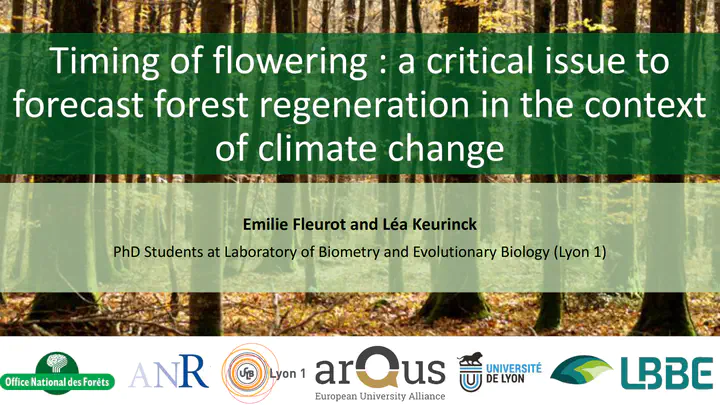Timing of flowering : a critical issue to forecast forest regeneration in the context of climate change

Abstract
Numerous forest tree species exhibit masting, a reproductive strategy consisting in intermittent production of fruits over years, with trees being synchronized in their fruiting effort at the population level. In mast-seeding species, fruit abundance is thus highly fluctuating from year to year, having major impacts on population dynamics and trait evolution of fruit consumers. Such pulsed resources may lead to cascading effects on the whole forest ecosystem, and also affect human society through health and economical issues. Previous work has shown that pollen phenology - the date at which trees release their pollen - is a key determinant of the fruiting dynamics, controlling both the frequency of mast years and the cyclic vs. stochastic component of the fruiting dynamics. Understanding the way in which the flowering date is going to be affected by climate change is a crucial challenge to untangle the future of these reproductive patterns, of forest regeneration and ecosystem dynamics. Focusing on two widely spread temperate oak species (Quercus robur and Q. petraea), we analyzed pollen phenology over the last 3 decades, and show contrasted shifts in response to climate change, depending on the population. We also set up bases of a predictive model of flowering phenology, which will allow us to forecast pollen phenology of temperate oaks as a response to climate change and inferring fruiting dynamics, tree reproductive success and oak forest regeneration.